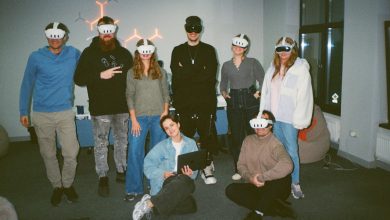
Three ways AI can meet humans where they are and finally drive real adoption.
Why? Because AI, as powerful as it is, hasn’t figured out how to feel human. And if it wants to be truly useful, it has to stop expecting us to adapt to it—and start adapting to us.
The truth is, AI’s biggest bottleneck isn’t the model—it’s the interface.
Most current tools rely on chat or voice prompts. That’s fine for questions like “What’s a nepo baby?” but things fall apart quickly when you need help with real-world complexity.
Imagine trying to brief an AI assistant on your next creative campaign. You can’t sketch, or point, and gesture wildly when the idea clicks. You’re left typing: “Make this look modern but nostalgic, bold yet understated, and also… purple.” Predictably, what comes back is clunky.
Designing AI That Understands More Than Just Language
When we built Extreme Platform ONE at Extreme Networks, we started with a simple idea: what if AI tools worked more like we do? That meant designing interfaces that mirrored how the human brain processes complexity—using analogies, visual cues, and cognitive shortcuts to make workflows intuitive. It’s human-centered design with AI in the co-pilot seat.
But here’s the catch: even our most thoughtful design choices are now just table stakes.
We’re entering a new era—one where AI needs to collaborate like a colleague, not just complete tasks. That means multimodal interaction: combining touch, visuals, conversation, and context so the AI can respond to what we’re doing, not just what we’re saying.
We’re not quite there yet. And what’s wild is, almost no one is talking about it.
Where’s the Conversation on Human-AI Collaboration?
I’ve been digging into this lately—reading articles, listening to podcasts, scanning the latest research. And you know what? Everyone’s obsessing over the models. GPT this, Gemini that.
But no one’s really asking: How should AI actually collaborate with people? Not in theory. In practice.
There’s a lot of talk about interfaces being “user-determined”—as in, the user decides how they want to interact. But that’s a trap. It just dumps the burden back onto people to figure out how to best talk to a machine. It’s like saying, “You can pick the tool—good luck making it work.”
And everyone’s assuming that someday, the model will magically know which interface is best. That’s the dream, right? Except that future doesn’t help you run your Tuesday team meeting, or finish that deck on deadline, or move a sticky note on your virtual whiteboard.
What Gemini Got Right (For Now)
If there’s one bright spot, it’s Google’s Gemini. For the moment (and let’s be honest, the advantage will probably dwindle in about 80 minutes), they’re setting the pace with Canvas, a space where you can create collaboratively—visually or with prompts. You can move elements around, or ask the AI to do it for you. It’s still early, but it feels closer to how we actually work.
There’s foundational research dating back decades about AI teaming up with humans as collaborators. But that future—where you and an AI partner co-create something on a shared canvas, where it moves things because it sees patterns or aesthetic opportunities, where it understands intent from action, not just language—is still out of reach.
We’re not yet at a place where you and I could be on a Miro board, and the AI smoothly nudges a card to a better place because it “feels” the flow. Why? Because current models can’t yet read intent from behavior. They’re still reliant on language to decipher reasoning. Until we crack that, the conversational interface is going to feel increasingly inadequate.
Let’s Get Real: Rethinking the AI Adoption Curve
If AI wants to be more than a novelty, it has to stop asking people to mold themselves to it—and start meeting us where we already are. A few ideas:
1. Tailor Interfaces to Fit the Task
Not everything should live in a chatbot. Some problems need drag-and-drop. Some need vision. Some need shared spaces. The future of AI is multi-modal—tools that adapt to our workflow, not the other way around. Think less “command center,” more “co-creator.”
2. Reduce Prompt Fatigue
Prompting fatigue is real. People get tired after four or five back-and-forths. AI should step in sooner, offer suggestions, show examples, and reduce friction. The best user experience doesn’t just respond—it anticipates.
3. Build Trust Through Tiny Wins
Trust is earned in small moments. Let AI handle micro-tasks—scheduling, summarizing, auto-sorting—and prove its value. When users see the AI’s got their back (and won’t RSVP to awkward events), they’ll give it bigger jobs.
________________________________
Lessons from the Frontlines: It’s Time to Talk Interface
Companies like OpenAI, NVIDIA, and yes, Gemini, are pushing the envelope on model development. But that’s only half the equation. The other half? How humans interact with these models in the wild.
That’s where the real magic—or friction—happens.
Because let’s be honest: we don’t just need better models. We need better teammates. Interfaces that are intuitive, contextual, and collaborative. AI that sees what we’re trying to do and helps us do it—without requiring a master’s in prompt engineering.
AI adoption doesn’t hinge on what the tech can do. It hinges on how well it works with us. Because the real question isn’t “how smart is the model?”—it’s “how human does it feel?”
And when AI truly meets us halfway, that’s when we stop tolerating it—and start loving it.




